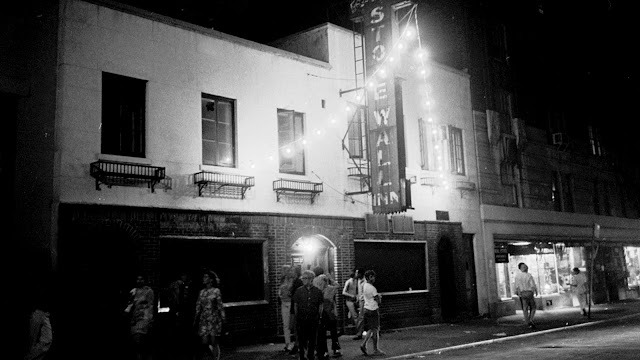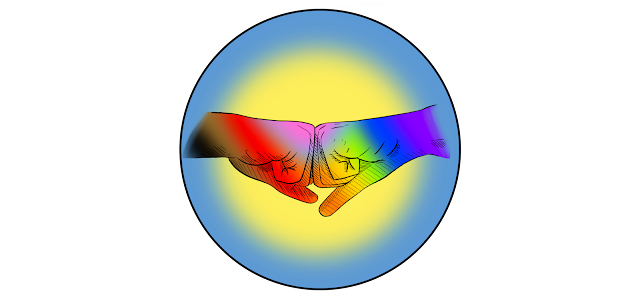The Gay Pride Flag Was First Developed by Gilbert Baker in 1977 After Encouragement from San Francisco City Supervisor Harvey Milk, the First Publicly Elected Official in California
THE RAINBOW FLAG SIGNIFIES GAY PRIDE - EARLIEST ITERATION 1978
"Flags Are About Proclaiming Power" - Gilbert Baker
Harvey Milk took office on January 8, 1978, but had long been an activist for gay rights. In fact, he had in 1977 suggested to Gilbert Baker, another gay activist, to develop a symbol for their movement in 1977. Although many have posited that that the idea of the rainbow flag was linked to gay icon Judy Garland (the term "a friend of Dorothy" has long been used as a colloquialism for gay men), Baker explained in 2015, "It's a natural flag. Its from the sky." The BBC.com article explains further:
In its initial incarnation, Baker’s rainbow flag consisted of eight colours – two more than the version now recognised internationally as an emblem for the LGBT community – and each colour was assigned a symbolic meaning. A band of hot pink (representing sexuality) ran across the top of the flag in the original scheme, followed by red (which stood for life), then by orange (for healing), yellow (sunlight), green (nature), turquoise (magic), indigo (serenity), and violet (spirit) at the bottom.
Displayed for the first time in the United Nations Plaza in downtown San Francisco in June 1978, this eight-striped version was produced by a team of 30 volunteers commandeering the washing machines of a public laundromat in order to rinse the dye from the fabric and the wide attic space of a gay community centre, where the individual strips were ironed and sewn together. This is the version that Harvey Milk would have known, if all too briefly, in the few short months before he and the Mayor of San Francisco, George Moscone, were shot to death in City Hall on 27 November by a deranged former colleague of Milk’s.
The unveiling of the flag was, however, the culmination of a movement in America that finds its inception in a series of events beginning shortly after midnight on June 28, 1969, at a gay bar in Greenwich Village.
The Stonewall Inn, Circa 1969
What Are the Stonewall Riots, and What Are Their Significance to the Gay Pride Movement?
The
raid resulted in a riot among bar patrons and neighborhood residents as police
roughly removed employees and patrons from the bar. The initial raid led to six
days of protests and violent clashes with law enforcement outside the bar, as
well as in neighboring streets and nearby Christopher Park.
The "Christopher Street Liberation Day March"
The First Gay Pride Parade Was Held in New York City in 1970
On year later, on June 28, 1970, the first Gay Pride parade, designated "
The Christopher Street Liberation Day March," was held in New York City.
The parade started on Washington Place between Sheridan Square and Sixth Avenue, moved up Sixth Avenue and ended with a “Gay-In” in Central Park. It is estimated that up to 5,000 people participated in the parade.
NOTE: As per this article, "At the time, the largest LGBTQ+ rights rally was a yearly silent vigil called “The Annual Reminder” held in Philadelphia. This event was a somber, and tightly orchestrated affair. It was usually “a small, polite group of gays and lesbians [would picket] outside Liberty Hall," Sargeant describes. "The walk would occur in silence. Required dress on men was jackets and ties; for women, only dresses. We were supposed to be unthreatening.” The event was put on by a gay men's rights group called the Mattachine Society, which was one of the earliest LGBTQ+ rights groups in the United States (it formed in 1950)."
LGBTQ+ Terminology - Gaining Widespread Understanding
Definitions of LGBTQ+ Terminology and Most Common LGBTQ+-Related Symbols
Here are some commonly employed definitions to inform your thinking:
"
Biological Sex" - ones biological make-up as male, female or "intersex." Common identifiers include genitalia, breast composition, facial/body hair, and chromosomes.
Bi-Sexual Pride Flag Established in 2010
"Bi-Sexual" - A person that is sexually attracted to persons of either sex. Traditionally, a bi-sexual person identified themselves as male or female based upon their biological composition (i.e. a male identifies as a male, a female as a female).
Philadelphia's LGBTQ+ Pride Flag - 8 Stripes, the Black and Brown at the Top Signifying Support for Black and Brown Communities - Est. June 2017
Pansexual Symbol - Est. in or Around 2010
"Pansexual" - not limited in sexual choice where biological sex is concerned. Pansexuals often refer to themselves as gender blind, emphasizing that a person's sex or gender identity is not material to them where sexual attraction is concerned.
Same Sex Marriages are Becoming More Accepted - and Legal!
"Same Sex Marriage" - Marriage between two people of the same sex. A hotbed of controversy, legislation and legal decisions.
"Sexual Preference" or "Sexual Orientation" - refers to one's sexual preference or attraction to members of the same sex. Common Euphemisms: Gay, lesbian, homosexual.
"Sexual Identity" or "Gender Identity" - refers to one's self identification as male or female, irrespective of one's physical attributes or genitalia.
Transgender Symbol
"Transgender" - refers to persons who identify themselves as belonging to the sex that is the opposite of their biological sex. Common Euphemism: Transsexual.
Click Here for a more complete glossary of LGBTQ+ terms.
We Hear You - We Hear ALL of You!









